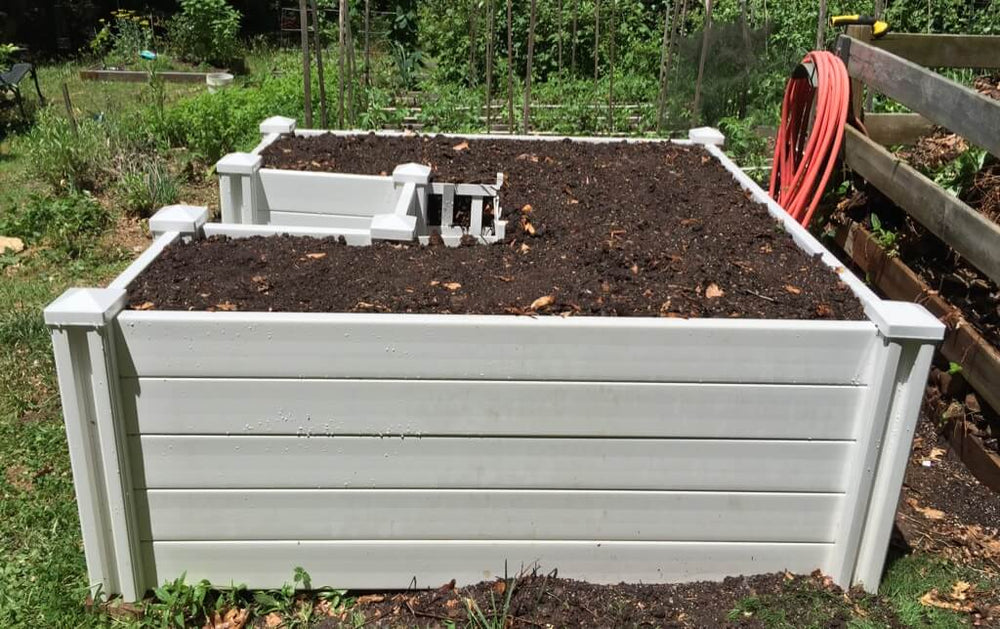Have you ever started digging a new garden bed, excited about the vegetables and vegetables you'll grow, only to hit rocks and roots with your shovel? Or maybe you planned to build a raised bed garden but never got around to buying the wood. Or perhaps you've been gardening in containers and you're itching for a little more space. Whatever your situation, the answer may just be a lasagna garden.
Lasagna gardening provides an easy, time-saving way to install a garden anywhere, without having to remove sod or till soil. There's no need for heavy equipment or tools, and you won't have any problems with roots or rocks. You simply create the garden with materials you probably already have on hand, then plant your crops the very same day.
What Is a Lasagna Garden?
Taking its name from the many layers used to create a favorite Italian meal, lasagna gardening is a layering method that produces a nutrient-rich garden bed you can use immediately. Patricia Lanza, author of Rodale's Lasagna Gardening, invented the concept after watching her widowed grandmother struggle with the backbreaking chores of plowing, weeding, and growing the family's extensive vegetable garden. She realized there must be an easier way — and she was right.
How to Create Your Lasagna Garden
Organic materials make up the lasagna garden layers, and most of the ingredients can be found at home. Newspaper, cardboard, shredded leaves, straw, compost, untreated grass clippings, coffee grounds, vegetable scraps, and aged animal waste (like chicken, rabbit, guinea pig, and cow manures) all work well. Ask neighbors to save their leaves and grass clippings for your garden if you think you might run short of supplies.
When deciding where to place your lasagna garden, look for a relatively flat area that:
- Gets 6 to 8 hours of sunlight
- Drains well
- Is near a water source
- Is protected from strong winds that could damage plants
Once you've determined your site, mark an outline for your lasagna garden bed using stakes and string or flour sprinkled on the ground. The garden should be no more than 4 feet wide, so that you can easily reach the center of the bed.
Now it's time to add the "ingredients" to make your lasagna garden.
- First, add a thick layer of newspaper or cardboard within your garden bed outline, making sure the material overlaps, and soak it with a hose. This base layer will smother any grass and weeds under the bed.
- Add a 2- to 3-inch layer of well-shredded leaves to cover the newspaper or cardboard. In her book, Lanza recommends using peat moss at this stage to add carbon to the bed, but shredded leaves also work quite well, are a renewable resource, and don't cost a penny.
- Top that with a 4- to 8-inch layer of nitrogen-rich organic material like grass clippings, compost, kitchen scraps, or aged animal manures (only from herbivores like cows and chickens).
- Add another layer of shredded leaves, then another layer of organic material, and continue alternating in that way until your lasagna garden bed is 18 to 24 inches high.


And just like that, your new lasagna garden is ready to plant! There's no need to wait for the layers in the lasagna garden to decompose. Simply make a hole through the layers for each plant. Your garden will be well-fed thanks to the rich organic materials, plus you may need to water less than you would with other garden types because the bed will retain moisture well.
Of course, as with any garden, you'll want to water it regularly, keep a lookout for pest or disease issues, and remove any weeds that sprout up on the way to harvest time. Meanwhile, keep collecting organic material so you'll have plenty of ingredients to add to your lasagna garden bed next year.
Article and images by Julie Thompson-Adolf.




 Herbs
Herbs
 Vegetables
Vegetables
 Fruit
Fruit
 Flowers
Flowers
 Succulents
Succulents


